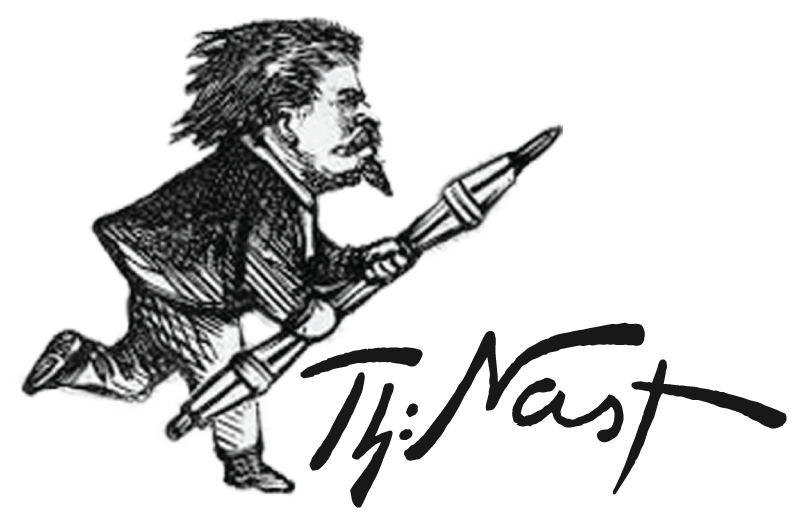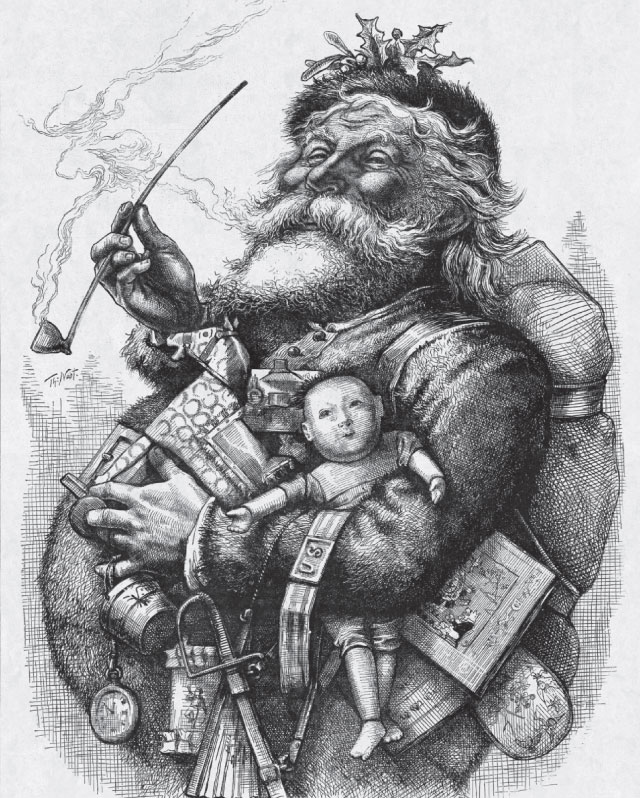
Thomas Nast (1840-1902) was the German-born American cartoonist whose depictions of Santa Claus helped to popularize a standard image of the North American Gift-Bringer and who added interesting details to Santa’s biography. As an illustrator for Harper’s Illustrated Weekly he would become famous as a political cartoonist inventing both the Republican elephant and Democratic donkey that are still used to represent the main American political parties. His zeal for reform helped bring down the corrupt rule of Boss Tweed in New York and elect Ulysses Grant as President.

But it is his drawings of Santa Claus that have made his reputation endure. Nast combined his memories of Christmas in Germany with an American sensibility to produce the prototype for the developing image of Santa, one that was to endure when rival images had long since been forgotten. For Nast the Gift-Bringer was kindly, fat and jolly, clothed (as “A Visit From St Nicholas” demanded) in furs from his head to his foot with a broad belt about his middle. Though Santa’s clothes have changed over the years the face and personality of all later depictions are ultimately derived from Nast. To Nast we also owe the notion of a North Pole workshop and the earliest depiction of children leaving out a snack for St. Nick. Many of the notions children in much of the world entertain about Santa were given expression by Nast: the book that recorded the deeds of good and bad kids, Santa’s spying on their activities, the working conditions in his polar operation, and the piles of letters from around the globe.
During the American Civil War Nast illustrated Santa in the Stars and Stripes of the Union cause and showed him bringing Christmas cheer to Federal troops at the front. This helped to spread the celebration of Christmas in the United States, to link it with the idea of family reunion and to associate it forever with Santa Claus. It also prompted reaction from the South where Santa’s apparent partisanship had to be explained to the children.